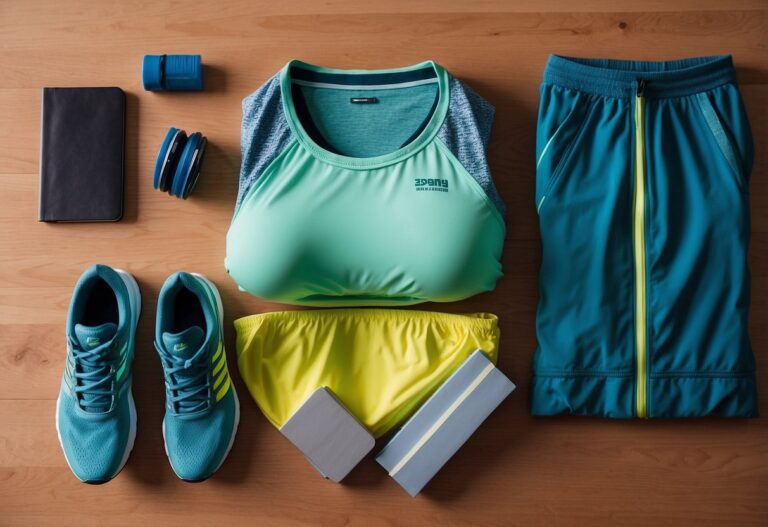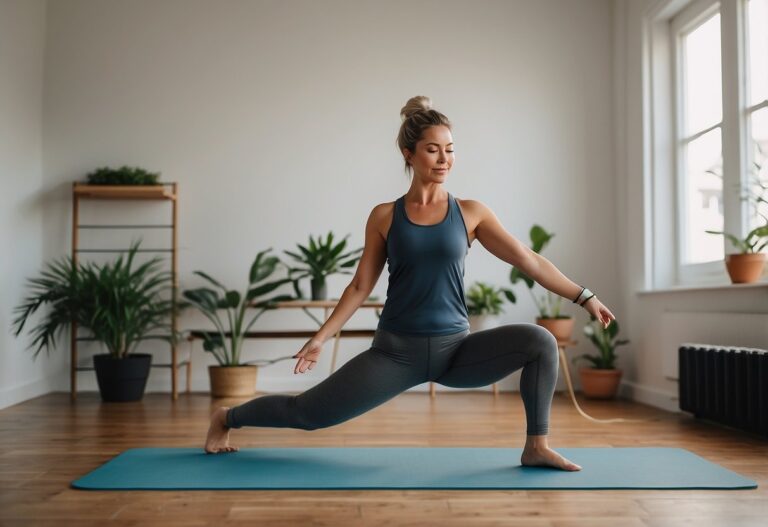After a workout, your body needs proper care to recover and gain the full benefits of your exercise routine. You might feel sore or fatigued, but knowing the right steps can make a significant difference. How can you ensure you’re maximising muscle recovery and overall fitness?

Incorporating the best post-workout tips into your routine can help you recover faster and keep you motivated for future workouts. Whether you’re a seasoned athlete or just starting, taking the right steps after exercising can enhance your performance and reduce the risk of injury.
Rehydrate with Coconut Water
After a tough workout, rehydration is key. Coconut water can be a great choice. It’s packed with electrolytes like potassium. These help replace what you lose through sweat.
You might wonder how much to drink. A good rule is around 500-700 ml per hour of exercise. Drink small amounts every 15-20 minutes for steady hydration.
Coconut water also aids digestion. Its high fibre content helps with nutrient absorption, which is important for post-workout recovery. It’s a natural and healthy alternative to sports drinks. Give it a try next time you finish your workout!
Stretch gently post-exercise
After a workout, it’s important to cool down with some gentle stretches. This can help relax your muscles and boost flexibility.
Start with a simple thigh stretch. Lie on your right side, grab the top of your left foot, and gently pull your heel towards your left buttock. Keep your knees touching. Repeat this on the other side for better flexibility.
For your back and shoulders, extend your arms in front of you, and rest your forehead on the floor. Mildly press your shoulders and chest towards the ground to deepen the stretch.
Don’t forget to stretch your chest muscles. Interlace your hands behind your back, straighten your arms, and lift them up slowly. Hold this position for about 10 seconds then gently release to recover faster.
Remember, stretching post-exercise can help you feel calmer and make your muscles feel less tight.
Opt for a balanced meal
After your workout, it’s important to refuel with a meal that has the right mix of nutrients. Protein is key for muscle repair and growth. Aim for 20-30 grams of high-quality protein within 30-60 minutes post-exercise.
Pairing protein with carbohydrates helps replenish glycogen stores. Consider a 2:1 ratio of carbs to protein for most workouts. A good example is grilled chicken with quinoa.
While fats are not as critical immediately after a workout, healthy fats support overall health. Think about adding a bit of avocado or nuts to your post-workout meal.
Experiment with different foods to find what works best for your body and goals.
Try a Cool Down Walk
After an intense workout, it’s essential to let your body recover. One great way is to go for a cool down walk. This helps gradually reduce your heart rate.
During your walk, focus on breathing deeply. This will help deliver more oxygen to your muscles, aiding in recovery.
Walking also helps reduce stiffness. It keeps your blood flowing, which can prevent muscle soreness.
So next time, don’t just stop suddenly. Instead, take a few minutes to walk and let your body cool down properly.
For more cool down exercises, you can check out this guide.
Use a foam roller for sore muscles
Foam rolling is an excellent way to relieve muscle tension and soreness after a workout. By applying pressure to your muscles, you can help to ease tight spots and improve blood flow.
Imagine you’ve just finished a tough leg day. Rolling your quads with a foam roller can help reduce that post-exercise ache.
To get started, lie down in a plank position and place the roller under your quads. Slowly roll towards your hips, stopping for a few seconds on tender spots. This technique can really make a difference in how you feel the next day.
Make sure to avoid rolling over joints like your knees or elbows. Focus solely on the muscles to prevent any injury or discomfort.
Enjoy a Post-Workout Smoothie
After a tough workout, a post-workout smoothie can be a delicious way to help your body recover.
You can add ingredients like Greek yoghurt, which is creamy and packs 13 grams of protein per cup. Tofu is another great option that gives you 10 grams of protein in just half a cup.
Adding seeds like flax or pumpkin seeds can boost your protein intake. For example, three tablespoons of flax seeds provide six grams of protein. Spinach is also a good choice, adding six grams for each cup you blend into your smoothie.
Consider mixing your smoothie with fruits for natural sweetness and extra nutrients. Try adding berries or bananas. Using peanut butter can add creaminess along with four grams of protein per tablespoon.
Think about the flavours you enjoy and experiment to find your favourite combinations.
Keep a Workout Journal
Keeping a workout journal can make a big difference in your fitness journey.
First, write down the date and the type of workout. This simple step helps you see your progress over time.
Next, jot down details of your exercises. Include sets, reps, and weights used. This allows you to track improvements and adjustments.
Make notes about how you feel during and after the workout. This can help identify patterns and adjust your workouts to better suit your needs.
You might also want to review tips and templates for fitness journaling which can be useful.
Reward yourself for milestones. Recognising small wins keeps motivation high. Consider reading more on recognising progress in fitness journaling.
Finally, keep your journal visible. Place it where you can easily access it, like your gym bag or bedside table. This way, you’ll be reminded to use it regularly.
Include protein in your meal
After a workout, your muscles need protein to repair and grow. It’s important to include high-quality protein in your post-workout meal. Think of options like grilled chicken or fish.
You could also try eggs or Greek yoghurt. These are great sources and can easily fit into your routine. For vegetarians, beans and lentils are excellent choices.
Pair your protein with some carbs for the best results. Your body will thank you for the balanced approach!
Experiment with Yoga Poses
Yoga can be a great addition to your post-workout routine. It helps in reducing muscle tension and improves flexibility. Have you tried the Boat Pose? It’s excellent for building core strength and can be adjusted for beginners and advanced practitioners.
You might also enjoy some yoga-based stretches that are perfect for cooling down. These stretches help in reducing inflammation and fostering the mind-body connection. Give them a try next time you finish your workout!
Track progress with a fitness app
Using a fitness app to track your workout progress can make a big difference. Apps like Jefit allow you to monitor your exercise routines and share them with friends. This can help you stay motivated and see your improvement over time.
Apps often come with pre-made workout plans and exercise guides. They can offer a variety of features like tracking your reps and sets, monitoring your heart rate, or even providing coaching tips.
For those who prefer free options, the Nike Training Club offers a wide range of guided workouts suitable for different fitness levels.
Proper Nutrition for Recovery
Eating right after a workout is vital for recovery. You’ll want to focus on getting enough protein and staying properly hydrated.
Importance of Protein
Protein is essential for muscle repair and growth. After working out, your muscles need protein to recover and build strength. Aim for 20-30 grams of high-quality protein within 30-60 minutes after your exercise. This helps repair the tiny tears in muscle fibres caused by intense activity.
Consider eating foods like grilled chicken, eggs, or Greek yoghurt. These are all great sources of protein. You can also drink a protein shake if you’re in a hurry. Don’t forget to pair your protein with some carbohydrates for better recovery. For example, have some whole-grain toast or brown rice along with your protein source.
Hydration Tips
Hydration plays a crucial role in recovery. Make sure to drink enough water to replace what you lost through sweat. A good rule of thumb is to drink 1.5 litres of water for every kilogram lost during your workout. That’s about three cups of fluid for every pound lost.
Drink water steadily after exercising, rather than gulping it all down at once. Explore adding electrolyte drinks if your workout was particularly intense. These help replenish the essential minerals lost in sweat. Additionally, fruits like watermelon and oranges can also help keep you hydrated and provide essential nutrients.
Always listen to your body’s thirst signals and don’t wait until you’re very thirsty to drink water. Keeping a water bottle handy can make it easier to stay hydrated throughout the day.
Effective Stretching Routines
Stretching after a workout is essential for muscle recovery and flexibility. This section covers the advantages of static stretching and how to integrate dynamic stretches into your routine.
Benefits of Static Stretching
Static stretching involves holding a stretch for a period, typically between 20-60 seconds. This helps to increase flexibility and relax the muscles. By stretching the muscles you used during your workout, you help them return to their resting length, reducing stiffness.
For example, after a run, you might stretch your calves by dropping one heel off a step and holding it. This targets the calf muscles and the Achilles tendon.
Static stretching also aids in improving circulation, which encourages faster recovery. You’ll feel more stable and less sore, making it easier to stay active and avoid injuries. Make sure to hold each stretch steadily without bouncing to prevent strain.
Incorporating Dynamic Stretches
Dynamic stretches are movements that gently take your muscles through a range of motion. These are great for warming up before a workout but can also be useful post-workout to keep the body moving smoothly.
Try shoulder rolls or leg swings as part of your cooldown. For shoulder rolls, you rotate your shoulders forward and back in a circular motion, which can relieve tension.
Including dynamic stretches helps maintain mobility and prepares your muscles for the activities of daily life. It can also prevent the stiffness that comes from a static-only routine. Focus on smooth, controlled movements to get the best results from dynamic stretching.







